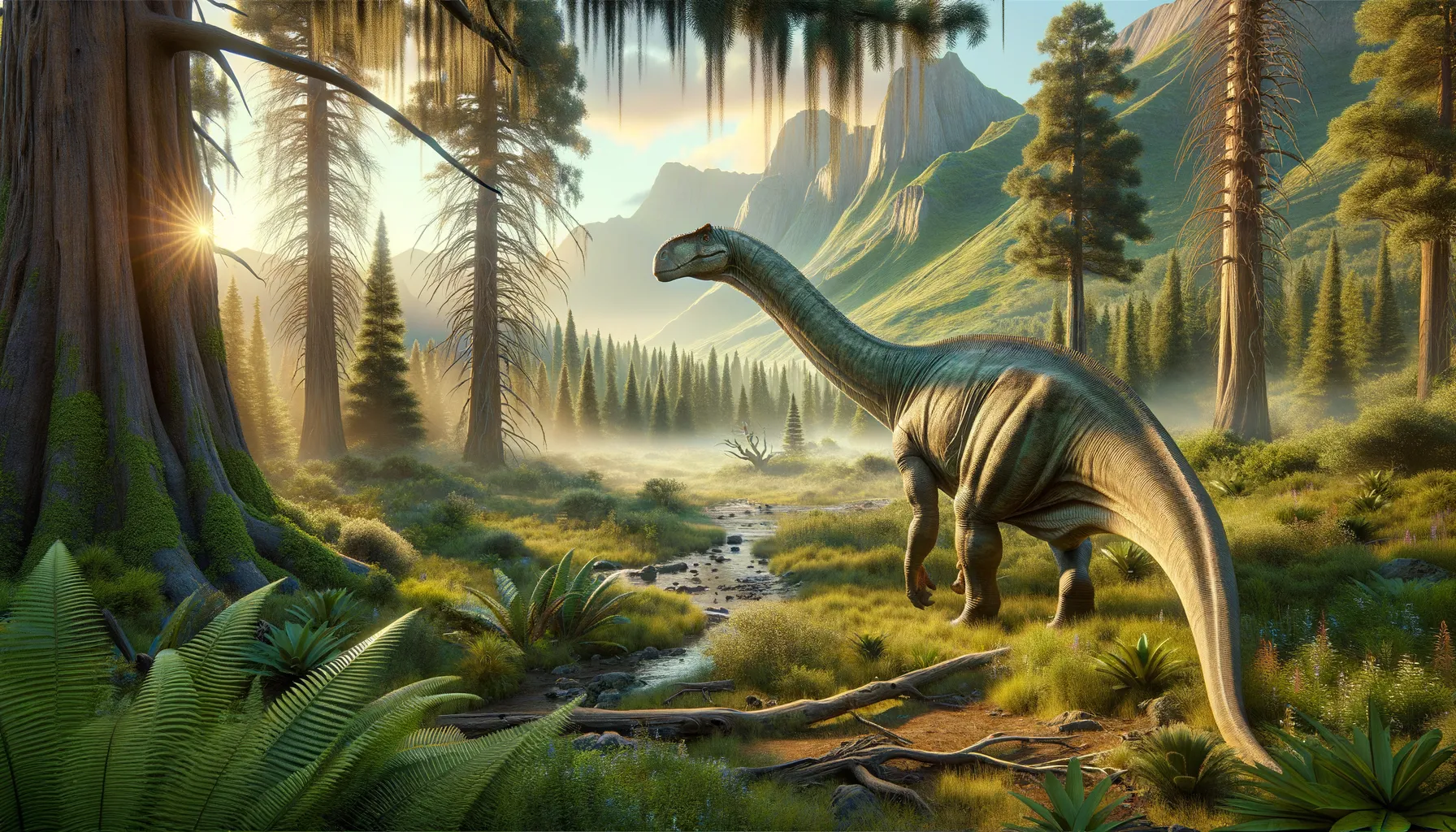
Demandasaurus
A Cretaceous giant of gentle grace.
Period
Cretaceous
Length
About 10 to 12 meters long.
Height
Approximately 3 meters tall at the shoulder.
Weight
Around 5 to 7 tons.
Demandasaurus was a medium-sized sauropod dinosaur, characterized by its long neck and tail. It roamed what is now Spain during the Early Cretaceous period. Part of the rebbachisaurid family, it provided critical insights into the migration of sauropods across ancient land corridors connecting Europe and Africa. Its discovery helped paleontologists understand further the diversity and distribution of sauropods across different continents.
Diet
Demandasaurus was a herbivore, feeding on a variety of plants and low-lying vegetation. Its long neck allowed it to reach different heights, giving it an advantage in foraging among trees and bushes.
Hunting
Being a herbivore, Demandasaurus did not hunt. Instead, it may have used its large size and long neck to access different feeding grounds and vegetation that smaller dinosaurs could not reach.
Environmental challenges
During the Early Cretaceous, Demandasaurus faced challenges such as changing climates and landscapes. Fluctuating sea levels could have altered the ecosystems, affecting the vegetation available to sustain its large size. Predators also posed a risk, though its size likely provided some protection. Surviving these environmental shifts required adaptations and likely drove migration patterns.
Speed
Relatively slow, as it was a large, heavy sauropod.
Lifespan
Estimated to be around 70 to 100 years.
First discovery
Discovered in Spain in 2003.
Fun Facts
- Demandasaurus is a lesser-known dinosaur that hails from the Early Cretaceous period, around 120 million years ago.
- It was a sauropod dinosaur, which means it was part of the same group as the famous long-necked giants like Brachiosaurus.
- The fossils of Demandasaurus were discovered in Spain, and it was named after the Demanda mountain range where it was found.
- This dinosaur likely had a long neck and tail, and it walked on all fours, much like its more famous sauropod relatives.
- Though it wasn't as large as some of the giant sauropods, Demandasaurus still boasted an impressive size, likely stretching around 10 meters in length.
- Demandasaurus is an example of the migration of sauropod dinosaurs from Africa to Europe during the Early Cretaceous period.
- Its discovery helps paleontologists understand the diversity and spread of sauropod dinosaurs in Europe.
Growth and Development
Demandasaurus, like other sauropods, had a prolonged growth period, taking several decades to reach full size. From hatchlings, they underwent rapid growth spurts to avoid predation. Fossil evidence suggests that these dinosaurs experienced growth rings, similar to trees, providing insight into their age and development patterns.
Habitat
Demandasaurus inhabited lush floodplains, rich with vegetation, which supported its herbivorous diet. The region was characterized by warm climates and fluctuating sea levels, creating diverse ecosystems. This landscape provided ample resources, attracting numerous dinosaur species, suggesting a complex ecological community.
Interaction with other species
Demandasaurus likely coexisted with various other dinosaur species, including smaller herbivores and large carnivores. Its size would have made it less vulnerable to predators, but young individuals faced higher risks. The shared habitat led to competition for resources among herbivores, potentially driving niche differentiation.
Natural lifespan
Demandasaurus lived for about 70 to 100 years in optimal conditions.
Reproduction
Demandasaurus reproduced by laying eggs, likely in nests constructed or selected in secluded areas to protect from predators. These eggs incubated using the ambient heat of the environment. The young would have been vulnerable at birth, requiring growth spurts to quickly increase their chance of survival.
Social behaviour
Sauropods like Demandasaurus were possibly social creatures, moving in groups to provide protection against predators. Group living may have facilitated the rearing of young and enhanced their foraging efficiency. Migration patterns might have been driven by the search for new feeding grounds.
Fossil locations
Fossils of Demandasaurus have primarily been found in Spain, indicating its presence in the Iberian Peninsula during the Early Cretaceous. These discoveries provide crucial evidence of sauropod dispersion into Europe. The Spanish fossils, particularly in the La Rioja region, have offered key insights into the rebbachisaurid family.
